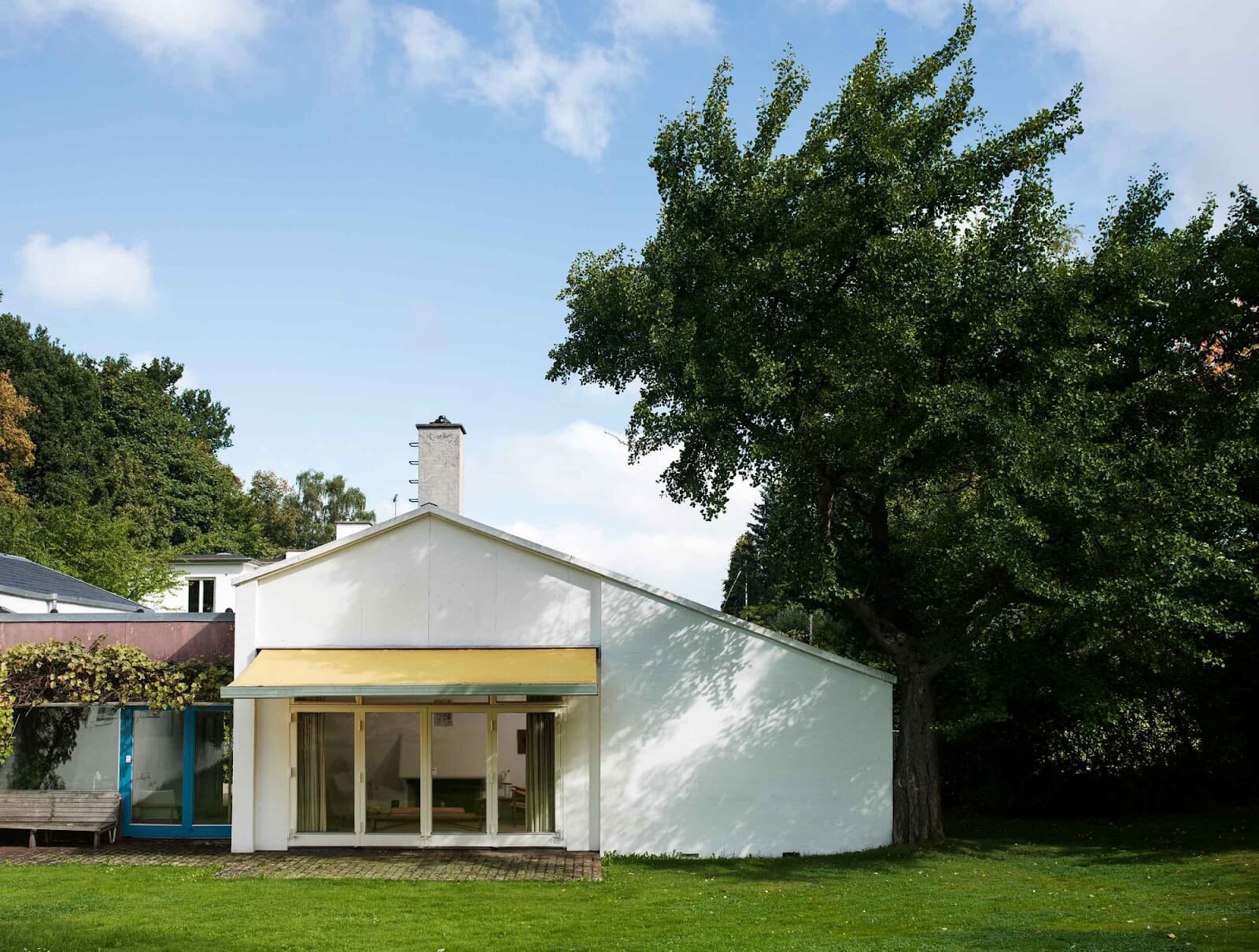What is Mid Century Modern architecture? (And 5 amazing examples)
Mid-Century Modern is back in vogue — just check the decor section of Pinterest or Instagram Explore and you’ll see what we mean. Just like with catwalk fashions, architecture and interior design trends are very cyclical and everything old is new again.
What is Mid-Century Modern architecture?
Think Mad Men. Flat roofs, natural light, bright accent colors and clean lines are dominating vision boards right now. But for all its popularity, the “MCM” design period is often cited incorrectly.
In fact, Mid-Century Modern is having such a resurgence right now that it risks becoming buzz-speak in architecture design circles. And certain retailers and suppliers will name-drop it, just to be on trend.
Let’s take a quick dive into Mid-Century Modern as a concept, so you know exactly what’s going on.
What time period is Mid-Century Modern?
Let’s be real, ‘mid-century’ is pretty vague. In fact, there’s a lot of debate about what actually constitutes the mid-century modern movement in the architecture world. Technically, we’re talking about the middle of the 20th century, so from about 1933 to 1965.
This is a very broad time span, especially when you think about how fast trends can change. And some would argue that ‘Mid-Century modern’ is specifically limited to 1947 to 1957.
So let’s hone in on those ten years.
This decade saw a shift in design trends and in how people chose to style their homes, following World War II. The modernist movement has roots in the Industrial Revolution at the end of the 19th century, which filtered down and informed everything from fashion to interior design.
In fact, we have Europeans to thank for pioneering the Mid-Century Modern movement. German designers moved to the US following WWII and brought the distinct Bauhaus art and design style to our shores. Characterized by simplicity and functionality, it was an accessible design style that took the country by storm.
The typical looks and features of Mid-Century Modern architecture
The distinguishing features of Mid-Century Modern are classic and understated, with clean lines, functional furnishings and nothing too ornate:
Minimalist aesthetic: flat planes, clean lines, nothing too showy and monochromatic palettes with pops of bright color.
Emphasis on the outdoors: many Mid-Century Modern homes have huge lawns or immaculate landscaping. The houses themselves incorporated big windows allowing for natural light, and sliding glass doors to bring the outside in. It was all about using natural light to make the home bright and welcoming.
Angular structures: Mid-Century architects employed asymmetrical forms and geometric shapes into their design. There are a lot of flat roofs, angular corners, and almost futuristic designs.
Our favorite examples of Mid-Century Modern architecture from the US and across the world
Palm Springs is the place to see excellent Mid-Century Modern architecture in the US. The city is dominated with classic examples of this much-loved design style — the minimalist aesthetic just works so well with the unique landscape of the Californian desert.
There’s something about those palm trees and low lying mountains that perfectly compliment the angular lines of the mid-century modern style, don’t you think?
The Arapahoe Acres neighborhood, in Denver, Colorado, was built between 1949-1957 as part of a project to improve residential design across the country. The homes were designed by architect Edward Hawkins, inspired by the style of Frank Lloyd Wright, and showcase the Mid-Century modern style that was all the rage at the time.
Arapahoe Acres is listed on the National Register of Historic Places, and is a highly sought-after neighborhood to live in — especially by people who appreciate the minimalist style of the homes.
Portland, Oregon is such a beautiful corner of the country, so of course you’re going to want to incorporate the outdoors into your home design. The Northwest Regional Style of architecture, unique to the Pacific Northwest, is an offshoot of Mid-Century Modern with a characteristic rustic look meant to blend seamlessly into nature.
Think wooden frames, giant windows, low silhouettes, vaulted ceilings, and airy atriums — just like the example above.
Scandinavian architecture is dominated by the same principles as the Mid-Century Modern aesthetic: clean lines, functionality, minimalism and nature. In the smaller cities of Sweden and Denmark, neighborhoods are filled with mid-century homes that are now enjoying a renaissance as the movement becomes trendy once more.
London has a surprising number of great examples of Mid-Century Modern homes — both original and renovations inspired by MCM. In such a big city it’s hard to imagine the clean lines and open space that characterizes the style, but they’re certainly there, mostly out in the suburbs.
Again, the builds are characterized by floor-to-ceiling windows, low and flat roofs, and plenty of outdoor space (where possible in such a metropolis!).
Is Mid-Century Modern the style for you?
So now you know more about mid-century architecture, what do you think? Is a style you could live with for years to come?






